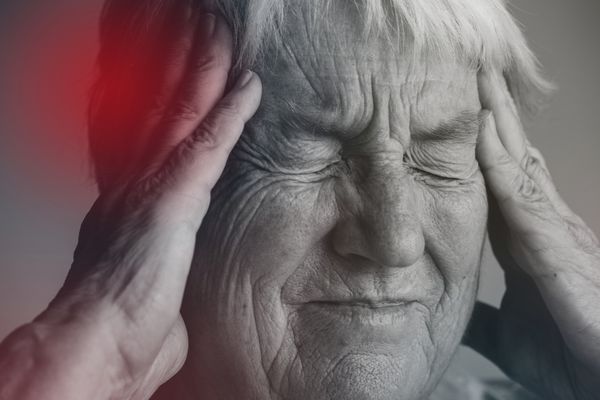
Rising Omicron cases, hospitalisations and deaths mean people are choosing the safety of their own homes over venturing out. The Director-General of Health explains to political editor Jo Moir why it’s still safe to be social.
Young people have made the psychological transition to living with Covid in the community much quicker than everyone else, or at least that’s the experience of the Director-General of Health.
In an interview with Newsroom on Thursday, Ashley Bloomfield said he looks at his own children and the way they’ve adapted, and his sense is that it will take more time for other age groups – possibly not until after cases have peaked – before it feels safe to return to some kind of normal.
But he says everything about the Covid protection framework is there to allow people to safely go about their day-to-day lives.
“There’s plenty of protection in place for people to get out and about. So saying, I can understand why people, particularly those with underlying health conditions or older people, will be wary at the moment.
“But for others who are otherwise healthy, and especially boosted, then using masks and things are designed to keep you safe,’’ Bloomfield says.
The traffic light system was built to keep business doors open and the message from the Prime Minister and Finance Minister from the outset when the framework was first announced was that the settings were specifically designed to keep people safe.
“In Wellington we are very much on our way up and we have got high case numbers, but I’m certainly going out to cafes to get things and to restaurants to eat in the evening, because those settings are designed to keep people safe.'' – Ashley Bloomfield
Bloomfield reiterated that point saying vaccination certificates, masking and distancing allows people to keep doing as much as possible, including sending children to school.
“We saw from one of the earliest pieces of evidence to emerge, from Japan actually, that the places most high-risk are indoor settings that are crowded, confined and close contact, and that’s not what the settings provide for under red.’’
In New Zealand a very low number of cases have ever arisen from hospitality settings where people have been exposed to the virus and then tested positive.
“In Wellington we are very much on our way up and we have got high case numbers, but I’m certainly going out to cafes to get things and to restaurants to eat in the evening, because those settings are designed to keep people safe,’’ Bloomfield said.
Under the red light setting positive cases and their household contacts are still required to self-isolate for seven days, so the most risk to the community is at home already, he said.
The switch from alert levels to the traffic light system has resulted in people being responsible for their own decisions and receiving far less instruction from the Government.
The number of people working from home is high, business is down from staff either isolating or not enough customers to warrant opening, and people movement and traffic in towns and cities is reduced.
Bloomfield told Newsroom he hadn’t been surprised by people’s reactions to growing numbers of cases in the community.
“The key feature of the last couple of years and the thing people responded to is that they felt safe. They look at how we’ve responded compared to other countries, we’ve had low cases and deaths, and that’s all changed in the last month or two.
“It’s been a huge transition for people psychologically,’’ he said.
“It’s a big shift for people with Omicron to understand we’re in a different phase now – we still have things we can do to protect ourselves, but it relies more on individualised decisions instead of those centralised government restrictions.
“My sense is younger people have made the transition more quickly, older folk are still very worried because there’s a lot of the virus in the community,’’ he said.
“As we come down off that peak and people feel safer and things will get back to normal, as it were, we will get people coming back to workplaces.’’
Bloomfield says working from home has played a role in helping slow the outbreak and “keeping case numbers at a manageable perspective’’.
As for the legacies that have come out of the pandemic, Bloomfield told Newsroom people’s willingness to stay home when they’re unwell and the newfound acceptableness of it has been a big change.
“In the health sector there’s been a real issue with presenteeism, especially with doctors, who think they have to go to work otherwise they’ll let their colleagues and patients down.
“But I think we will have a different attitude to that and that is a good thing.”
Bloomfield says the ways technology, like Zoom, is used to keep things ticking over has advanced a lot.
“You can run the country over Zoom now,’’ he says.
While New Zealand certainly hasn’t hit its peak, in Auckland Bloomfield says it’s really clear over the last week that Covid cases have dropped substantially.
But much like the flu, which annually kicks off in Auckland communities and then spreads its way down the country, the Omicron pandemic is doing the same.
Modelling suggests cases are still expected to start flattening out nationwide by the end of the month, prompting the opening of borders in early April and upcoming announcements around the traffic light system and vaccine mandates.
Cabinet has been reviewing advice on that over the last week and the Prime Minister will lay out a timeline for more lifting of restrictions next week.
Restrictions for the vaccinated have been gradually reducing since the Auckland lockdown and border came to an end last year following the Delta outbreak.
While some defence mechanisms will stay in place, Newsroom understands dealing with the virus in the future will be centred for the most part around high vaccination and common-sense behaviours.
That means continuing to work on getting more of the population vaccinated and boosted and requiring masks in high-risk locations, like public transport for example.
Ardern has repeatedly held the position that for most people self-imposed lockdowns aren’t necessary, but that message hasn’t always filtered through.
Expect to see specific messaging next week about it only being the elderly, those in aged care, and the vulnerable who need protecting as the average hospitalisation age starts to creep up.







